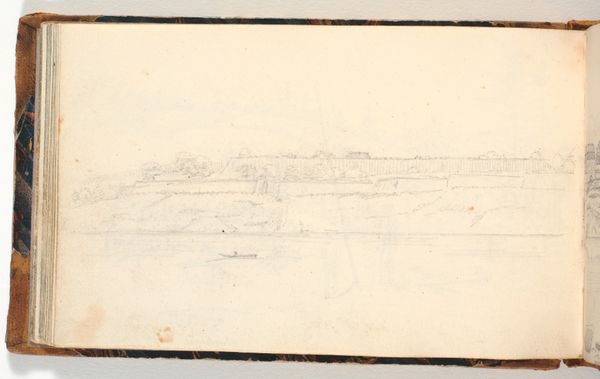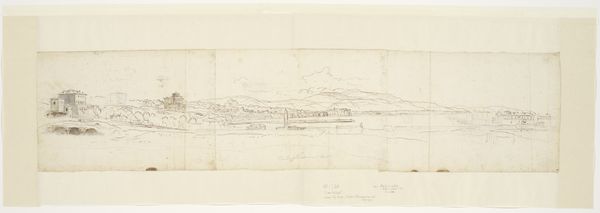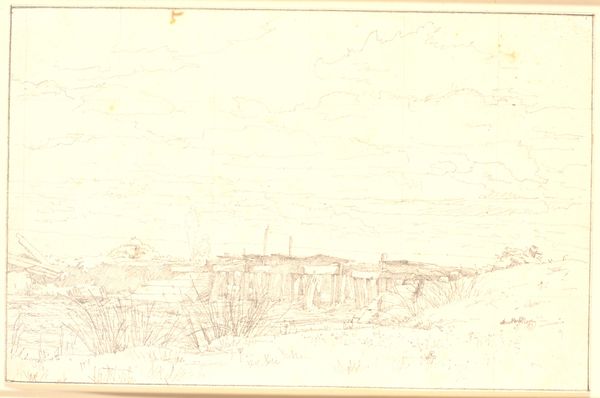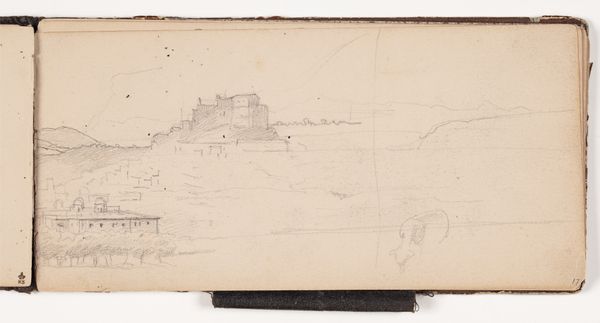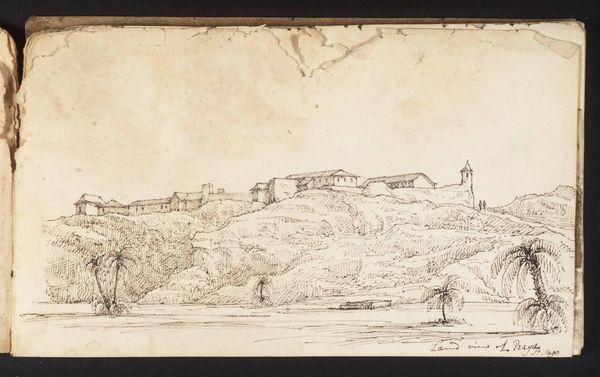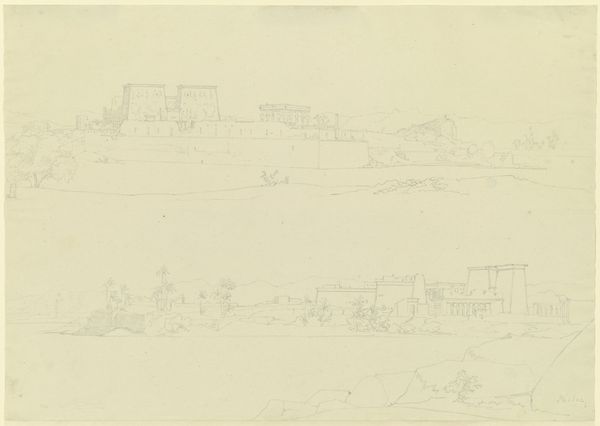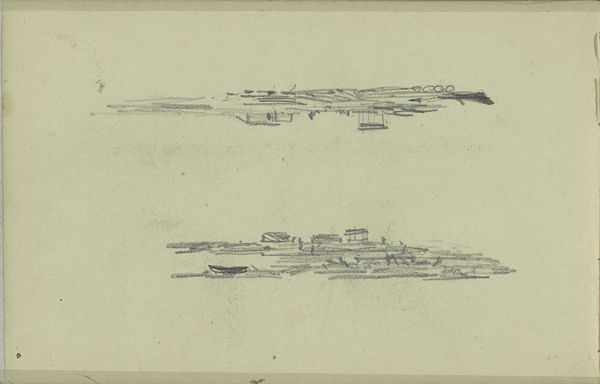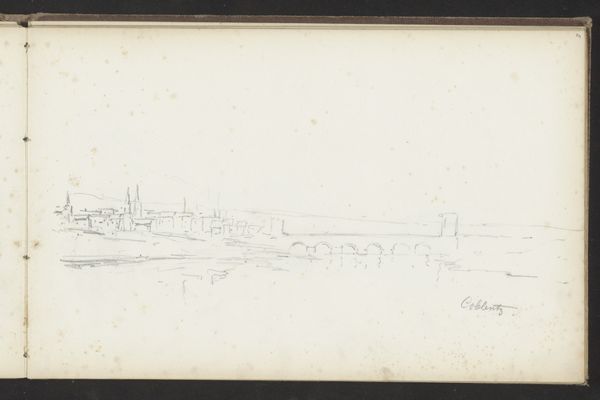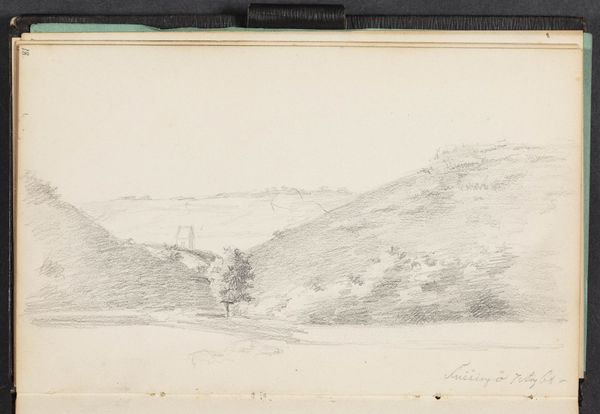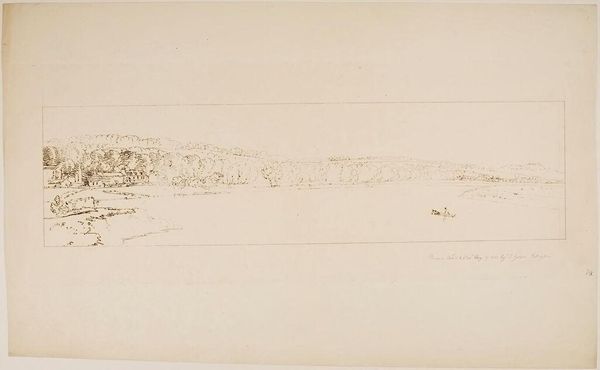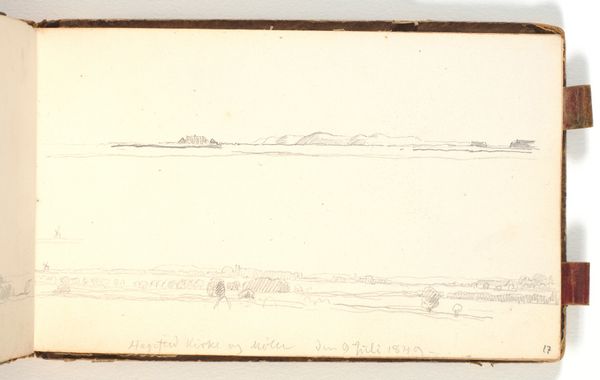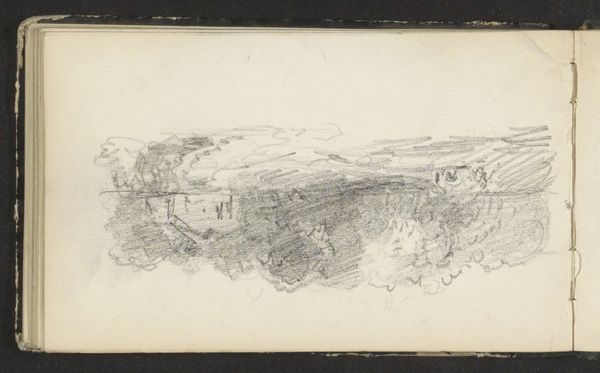
Dimensions: 204 mm (height) x 115 mm (width) (bladmaal)
Curator: Here we have "View Towards Buildings and Trees on a Hill" by P.C. Skovgaard, a pencil drawing made in 1869. It's currently held at the Statens Museum for Kunst. What strikes you first about this piece? Editor: The quietness. It's such a restrained and minimal use of material. Just pencil on paper, giving a very subdued atmosphere. It makes me think about the physical act of drawing, of Skovgaard's hand moving across the page, mapping this landscape with just a few strokes. Curator: Absolutely. Skovgaard was deeply embedded in the Romantic tradition. His landscapes aren't just depictions of nature; they are loaded with cultural and national meaning. In his era, representing the Danish countryside meant so much for national identity and cohesion. Editor: Yes, but consider how humble the materials are. This isn't oil on canvas, a medium traditionally associated with "high art" and official commissions. He selected a simple pencil to map this site; was this his method of approaching an existing and popular discussion from a differing level within society? Curator: Interesting perspective! Given the context, I think Skovgaard's work here served to subtly reinforce existing notions of Danish rural idealism. A quick drawing style doesn't challenge the traditional views of his time, however, it would reflect the growing market for quickly and efficiently capturing beautiful scenes in locations popular at the time. Editor: Perhaps, yet the sketch feels raw, like an intimate moment between the artist and the landscape, unmediated by grand pronouncements. Looking at it, I'm compelled to see a material connection to place. You see Skovgaard interacting with materials sourced directly from a community who consumed those visions of loveliness. Curator: It’s certainly a refreshing and efficient capture and I think this showcases how artists even back then took into account audiences in order to maintain popular acceptance. Editor: That makes sense. Thinking about it this way gives us insight into how artwork, especially the simpler artworks can act as both a form of accessible public consumption and social discourse within communities. Curator: Exactly. It provides a lens to study both artistry and cultural acceptance across communities through a shared vision and materials. Editor: Right. It forces us to consider what we are presented and what choices the artist and the audience held.
Comments
No comments
Be the first to comment and join the conversation on the ultimate creative platform.
